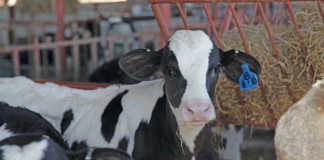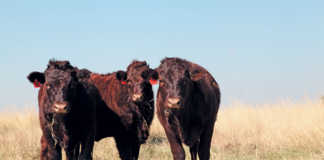Water is by far the most essential single component in the diet of humans and other animals. It’s also the main component in all living plants and animal tissue, yet is often neglected in ration formulations. Time and space do not allow me to elaborate on the complex role water plays in the physiology of the cow, other than to mention that it serves both as a cooling and heating mechanism in regulating body temperature in an animal where sweat glands are limited or absent.
Observe
Now… fetch that beach umbrella, deckchair and cold beer, it’s time to observe your herd.
Cows occupy their time with the following activities:
Eating: ~ 5 hours
Drinking: ~ 1 hour
Grazing: ~ 8 hours.
Resting and chewing the cud: ~ 10 hours.
Urination: nine times to produce 14l to 20l urine.
Defecation: Between 12 to 18 times to produce 32kg to 37kg dung.
Content
Normal cow dung has a water content of 80% to 87%, but on lush pasture it can be as high as 90%. Since this can induce benign diarrhoea, the excuse of partially meeting water requirements through high moisture grass carries little credibility.
The balance (20%-10%) of the dung is dry matter. Of this, 17% is protein and 10,63% minerals, and its energy value is 4,6MJ/ kg (DM). It’s amazing how consistent this figure is, irrespective of the diet.
On a practical level, we can make a rough estimate of where the 150l or so of water that a high yielding, lactating cow drinks per day goes. On a production level of 40l/day: we have 35,2l milk, 29,6l urine and 20l dung, giving a daily total of 84,8l. The rest is for maintenance, lost through vaporisation through the nostrils, and 40l as saliva secreted during rumination.
Observing cows shows that they have a strong social hierarchy. When the most dominant cow drinks, the others follow. This puts a strain on the replenishment rate of water in the trough. The drinking trough should be large enough to cater for at least 10 cows at a time, with each cow drinking up to 10l at a time.
Opportunity
The trough must be thoroughly cleaned of algae growth at least once every 14 days. This could open an opportunity for an independent contractor in an area with many dairy farms, provided the distances between them is short enough to make travelling between them economically viable. Malcolm Stewart-Burger founded the Society of Master Dairymen and designed the Maxi Milk System. He is currently a part-time consultant to Nutex Feeds and De Heus.
Contact Malcolm at [email protected]. Please state ‘Milking for profit’ in the subject line of your email.













